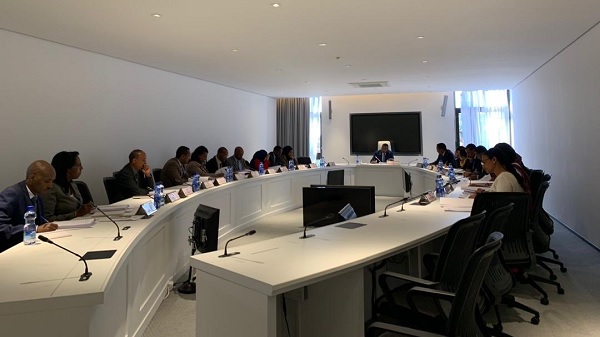
Ethiopia has become the newest member of the Africa Continental Free Trade Agreement (AfCFTA) when the Council of Ministers, the country’s executive body, approved its candidacy to the platform on 2nd February 2019.
ADDIS ABABA (Semonegna)– Ethiopia becomes the 18th country to ratify the African Continental Free Trade Agreement (AfCFTA). This comes ahead of the 32nd Ordinary Session of the Assembly of the African Union (AU), which will take place from 15 January to 11 February 2019, under the theme “Refugees, Returnees and Internally Displaced Persons: Towards Durable Solutions to Forced Displacement in Africa.”
The AfCFTA was signed in Kigali, Rwanda on 21st March 2018. Signing the AfCFTA does not yet establish the African Continental Free Trade Area. It will function as an umbrella to which protocols and annexes will be added. Once all documents are concluded and ratified by 22 states, the free trade area will formally exist. That means, after Ethiopia’s signing, only four additional ratification is remaining to creating one African market.
Ethiopian Premier Abiy Ahmed said the country’s decision to ratify the agreement was consistent with his vision of “creating a closer and full regional integration, where minds are open to ideas and markets are open to trade”.
Office of the Prime Minister of Ethiopia said the decision to ratify the agreement is consistent with Prime Minister Abiy Ahmed’s ‘vision of creating a closer and full regional integration —where minds are open to ideas and markets are open to trade. Ethiopia’s decision and track record of advocating Pan African causes will bring to reality an integrated Africa.’
What is Africa Continental Free Trade Agreement (AfCFTA)?
AfCFTA is one of the biggest trade agreements in the world since the creation of the World Trade Organization (WTO).
The Africa Continental Free Trade Agreement (AfCFTA) is an Africa-wide free trade agreement (FTA) designed to boost intra-African trade and pave the way for the future establishment of a continental customs union. The AfCFTA builds on existing Tripartite FTA negotiations amongst three African regional economic communities (RECs): the Southern African Development Community (SADC), the Common Market for Eastern and Southern Africsa (COMESA) and the East African Community (EAC), although it would like to incorporate all other African RECs too.
The decision to establish the CFTA was adopted as early as 2012 by the heads of state at the 18th ordinary session of the African Union (AU), and negotiations officially begun in June 2015. In bringing together all 54 African countries with a combined GDP of more than US$3,4 trillion, the CFTA is an ambitious project that will connect more than one billion people to a variety of cross-continental goods and services through enhanced trade facilitation and greater movement of people and investments.
Why do we need AfCFTA?
The CFTA stems, in part, from the realization that regional integration is stultified and not equitably pursued amongst all African regional economic communities (RECs), and that intra-African trade is at critically low levels compared to African trade with outside partners.
Read the complete story: What is Africa’s Continental Free Trade Agreement (CFTA) anyway? ― A brief guide
